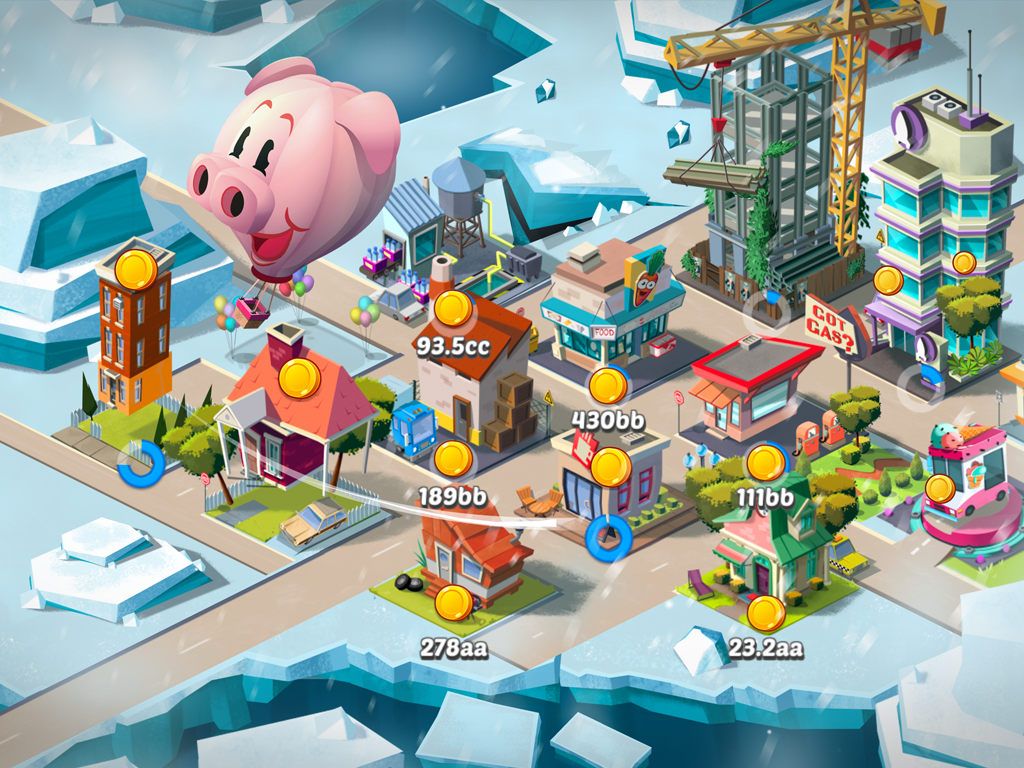"$1 a day brings each of our top players watching ads"
The popularity of the rewarded video has led to the spread of a new monetization model – view-to-play. We asked Jamie Laes, founder of Futureplay Games and a supporter of this model, about working with her.
Looking ahead, Jami’s personal questions can be asked at the PGC Helsinki 2017 conference, which will be held in Helsinki from September 19 to 20. If you don’t have a ticket yet, you can buy it with a 20% discount using the promo code WN20 here.

Jami Laes
Alexander Semenov, Senior Editor App2Top.ru Questioner: You are the main evangelist of the monetization platform on the market today. Can you tell us about it as part of a short introduction?
Jami Laes, founder of Futureplay Games: The futureplay model structures gameplay, sessions and monetization around the use of rewarded videos. It allows you to progress, get boosts and improve the gaming experience with and without in-game purchases.
In our games, you can play and move forward both completely without purchases and without advertising at all, but if you find a balance between these two ways, then it will become more interesting to play, and progress will be faster.
Advertising has a higher conversion rate, since the player does not have to fork out — in exchange for boosts and rewards, it is enough to simply spend 20-30 seconds of time.
You are the first one who started actively talking about this type of monetization as a self-sufficient system. Tell me, how did her idea come to you?
Jamie: The interest in vutuplay arose during our work in previous companies, where we found out that revenue can grow even when the audience decreases. After studying the market data, it became obvious that the mobile video advertising market is growing even faster than IAP, and that in a couple of years it will become huge.
In addition, we have seen how the gaming industry has changed over the past 17 years, how it continues to change — thanks to new models, games, mechanics, and so on. We thought that the right advertising should benefit players, advertisers and developers, and decided to focus specifically on vutuplay, because in 2015, when we founded our company, most studios had not yet had time to evaluate the advantages of this market niche.
According to your estimates, what is the share of advertising in the income of game developers in the market as a whole today?
Jamie: Everything very much depends on the game and on the developer, on whether the game has a balance between advertising and IAP, as in our games, or there is no advertising at all. In our case, 75% of revenue comes from rewarded video, and 25% from IAP, and this ratio has remained relatively unchanged for almost two years.
I think that in the market as a whole, the percentage of profit from advertising is growing, as more and more developers are convinced that this is a great way to monetize the entire audience, and not just non-paying players.
Despite the fact that many earn a solid part of the revenue from advertising, why do you think few people are in a hurry to get up officially under the banners of the vutupley?
Jamie: I think if a company does not build a monetization strategy on advertising, it makes no sense for it to somehow separately declare the use of a particular model. It’s just part of the overall monetization scheme.
We have been focusing on the vutuplay from the very beginning: we have thought through the design, developed and supported the games in such a way that advertising has always been at the forefront. Our games are exactly the same shareware, with IAP, only advertising in them is not on the sidelines.

Build Away!
Is it possible that the vutupley will replace the fritupley?
Jamie: For many, this has already happened — in the sense that advertising has become an integral part of most games. But it is unlikely that there will ever be a single monetization scheme for everyone. The world is a complicated thing, it is constantly evolving. The same thing happens with markets, players, and their preferences. In a couple of years, some new models will appear. So all developers have to constantly look for the right combination of new and familiar ways of monetization for their product and audience — in order to earn money and make players happy.
Which games are best suited for vutupley, and which are better to monetize in more traditional ways (and in which cases in any case it is not necessary to use advertising)?
Jamie: When the monetization model first appears, it immediately becomes clear that it will be suitable for certain games without problems, but it will be more difficult to adapt other genres.
At first, it was the same with frituplein games. It took many years and a lot of attempts to figure out how to apply this model in certain genres.
The scheme is absolutely the same with vutupley: some genres are easier to adapt than others. But in general, I believe that advertising can be made part of the monetization model in almost every game, if you approach it correctly. Some types of users are more susceptible to advertising than others, and for each specific audience or project, you need to separately adjust the balance between IAP and advertising — so that both of these models naturally fit into the gaming experience.
What is the main difficulty when working with a vutupley, what is important to remember?
Jamie: Start with advertising. It should become part of the game cycle, economy and design sessions even at the stage of preparation for development. If you start thinking about how to balance advertising and IAP by the end of the project, the results will not please.
Advertising with regular viewing is often repeated and begins to bother the player, how do you solve this problem and is it a problem at all?
Jamie: We are engaged in advertising mediation ourselves and manage our advertising inventory so that our players receive the highest quality gaming experience. But sometimes, if a project is being advertised especially hard, there may be a certain number of repetitions. Up to a certain limit, this is not a problem, people are used to seeing repetitive videos. This is perceived as the norm.
How does the need to constantly watch ads, even interesting ones, affect retention?
Jamie: Advertising is no more a necessity than any other component of the game. If you watch the videos, you will begin to progress faster, but the same applies to any other game actions. But if you don’t go into details, the answer is positive. People who are involved and who like the game watch ads more often than others and play longer.

Build Away!
How much do you really earn from a loyal player per day on video ads?
Jamie: Approximately 1% of our top players watch more than 30 rewarded videos per day. Each such player brings us $1 every day. If the user goes further, that is, installs a certain number of advertised games and starts playing them, then the daily income will grow to $ 25. The most loyal users watch 200 videos a day.
The problem with advertising and its implementation in the game is that a lot of parties are involved in this process (media, advertising grids, any additional solutions). It is very difficult for the developer to control the whole process at this stage. But he needs to do this, because all revenue begins to depend on his partners. Is it so? And how is it possible to effectively exercise control?
Jamie: There are certain platforms that simplify the process of interacting with networks. In addition, the developer does not need so many advertising grids to get the most out of the market — provided, of course, that he himself is engaged in network mediation. Everything is simpler than it seems. Of course, the larger the scale of the project and the business as a whole, the more difficult this process will become, but it will not be difficult to start even an indie loner.
Last question. If vyutuplay wins the game market as a way of monetization, how do you think the market will change?
Jamie: If all or most games focus on advertising, then there will be more advertising inventory. It seems to me that its excess will lead to a lower CPI and eCPM, but the number of projects that will be able to spend money on acquiring users will increase. The percentage of branded advertising in mobile will also grow.
If advertising is done in such a way that players will like to watch it, then it will only benefit everyone. But just like in the freeplay, there will always be some percentage of carelessly made games that will disappoint players.
I hope that with the increasing prevalence of vutupley, developers will begin to pay more and more attention to how to properly integrate advertising into the project — to benefit players, advertisers and themselves, to create a positive gaming experience and space for further market growth.
See also: